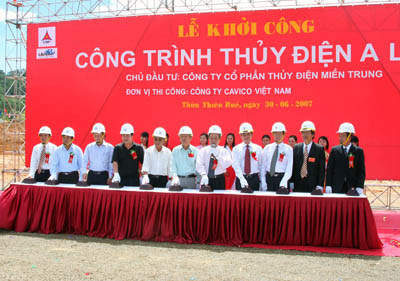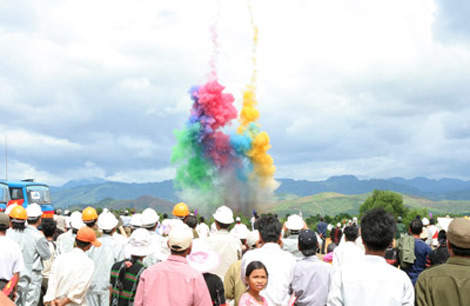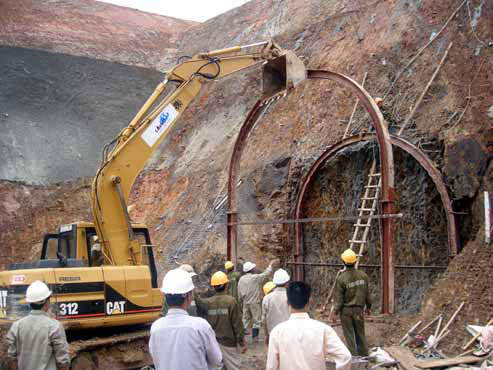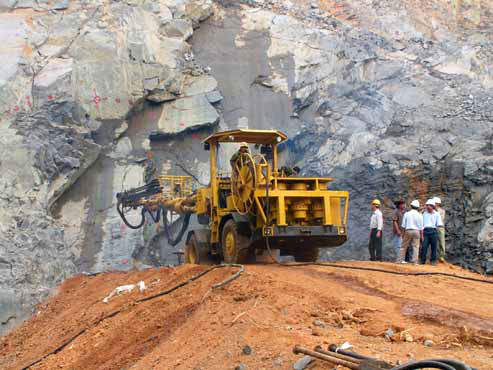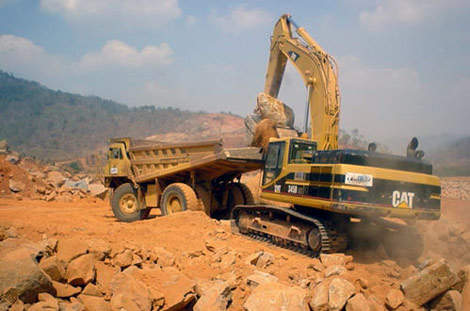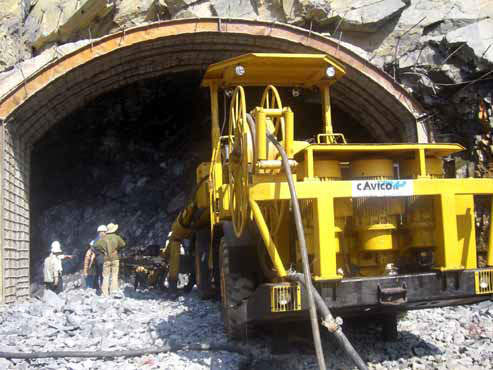Construction of the A Luoi hydroelectric plant began in June 2007 and it was originally scheduled for commissioning in the last quarter of 2010, but was delayed by two years. The plant is now scheduled to start generating 170MW at the end of 2012.
The plant’s 170MW comes from two turbine groups, which will supply the Vietnamese national grid with nearly 700GWh per year. The plant is located on the A Sap river in Thua Thien Hue province, 70km west of the city of Hue and 160km north-west of the city of Da Nang. It will also move water to Bo River, thereby increasing capacity and electrical output of the Huong Dien hydropower factory on the Co Bi River.
The A Luoi Hydropower plant is estimated to cost $202.1m, and is owned by Vietnam-based hydropower generation company Central Hydropower Joint Stock Company (CHP).
It includes the longest and most sophisticated tunnel to be constructed in Vietnam.
This headrace tunnel is being built by Cavico Corporation at a cost of around $55.4m.
Cavico was awarded the tunnel excavation contract in 2007.
Construction of the A Luoi hydropower plant
The A Luoi project features a 14km-long and 6.5m-wide main tunnel. It also has four sub-tunnels, a vertical shaft, a surge tank and an access road.
The main tunnel begins at the tail of the reservoir and ends near Ho Chi Minh Road. The tunnel and the penstock carry the water to the powerhouse, which is later sourced back to Bo River on the left of the tunnel.
As of April 2010, equipment for the construction of main works was purchased and work such as ground clearance, construction of local roads and power supply to the construction site was complete.
A vertical shaft measuring 128m long and 4.54m wide was drilled using the advanced technology of Robbins 61R.
The first and second sub-tunnels broke through in August and December 2010 respectively. The breakthrough of the third and final tunnel was achieved on 28 April 2011. The main and sub-tunnels were excavated by applying the New Austrian Tunnelling Method (NATM) and blasting method.
Transmission lines
Power generated at the A Luoi plant will be transmitted to two transformers via 220kV transmission lines. The transformer at Hue is located 28km from the plant, while the Dong Ha tranformer is 84km away.
Financing
CHP and the Vietnam Bank of Agriculture and Rural Development signed the contract for capital sponsorship and credit. The bank is playing a mediation role in the contract with three other co-creditors: the Vietnam-Thailand Joint-Venture Bank, the An Binh Jointstock Commercial Bank and the Rubber Financing Company.
The 12-year term and its three-year grace period has helped meet one-third of the A Luoi project’s estimated costs of over VND3.2trn.
Vietnam power market
Vietnam’s economy depends on its many natural resources with agriculture, forestry and fisheries amounting to over a quarter of the country’s total GDP, and nearly three-quarters of total employment.
Unsustainable management of resources is a threat to Vietnam’s continued economic viability. Environmental degradation is increasingly undermining the economy’s capacity to support, let alone increase, demand.
In a move to counter these effects a 3,000ha reforestation project was proposed for the A Luoi district.
Environmental changes are already motivating the considerations for renewable energy. Gas is the main source of energy in Vietnam. It constitutes 43.7%, while the rest is sourced from hydroelectricity (35.3%), coal (14.6%) and other sources. Prominence of hydroelectricity has resulted in cheap electricity tariff in Vietnam.
Over 400 small hydro stations with a total installed capacity of 30MW are now in place to maximise Vietnam’s high rainfall and dense system of rivers and streams. On a smaller scale, it is believed that over 100,000 micro and family hydropower generators are now in use.
Solar energy potential is also rich, with a daily average of 4–5kWh per square metre. There are currently five large-scale solar photovoltaic power systems with a considerable number of hybrid solar PV and micro-hydropower generation plants being built. The government is also financing the construction of 100 solar home systems and 200 solar community systems off the north-east coast.
Wind energy potential remains relatively modest, and is mainly concentrated around coastal areas. The Research Center for Thermal Equipment and Renewable Energy (RECTARE), situated in Ho Chi Minh Technical University, develops and promotes wind energy technologies, and has installed over 800 wind generators in over 40 provinces and towns throughout Vietnam.
The largest numbers have been installed near Nha Trang city in Khanh Hoa province on the south-central coasts, with 135 units.
The potential for biogas and biomass is fairly large, and is mainly used to produce fuel in rural areas. The master power development plan of Vietnam for 2006-2010 favours energy production through coal even though gas and hydro power dominate the energy market.

